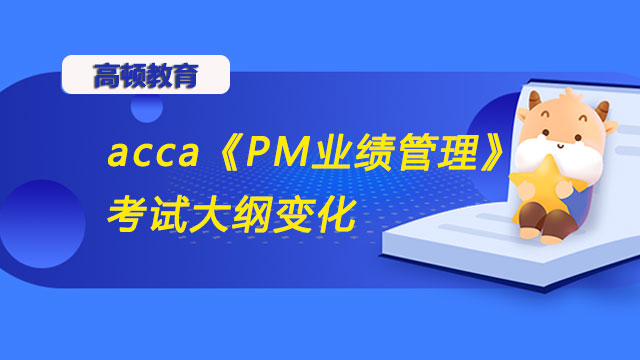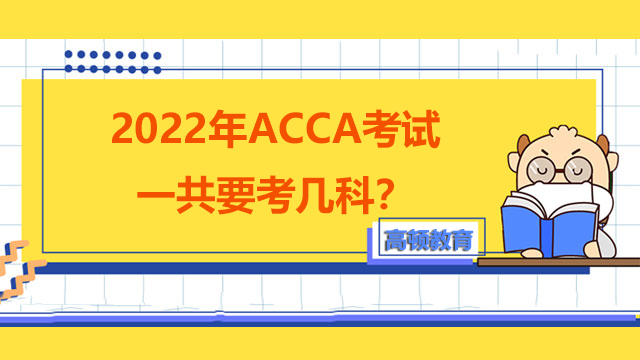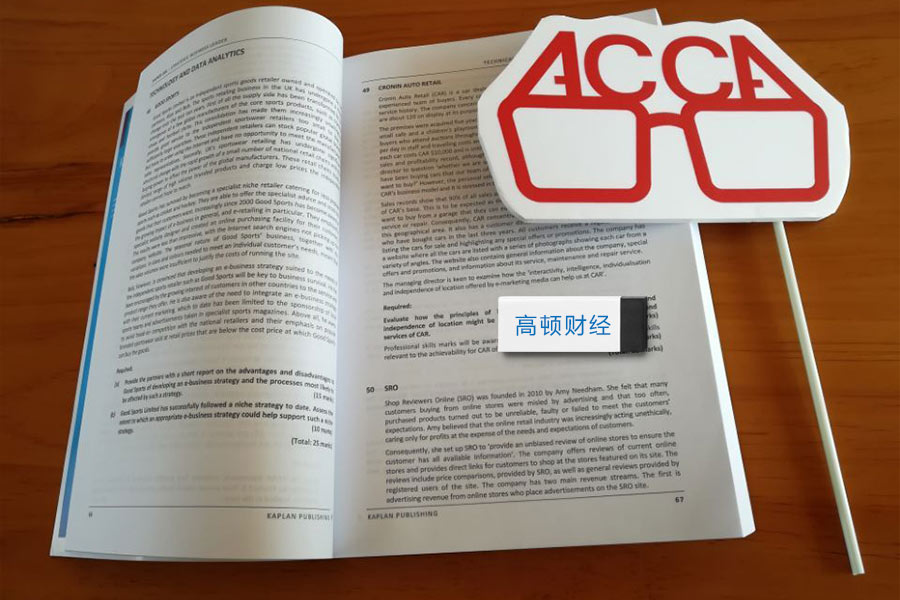2015ACCA F1会计师与企业考试大纲
来源:
高顿网校
2015-03-25
? ACCA 2014 All rights reserved.
1
Accountant in Business
(FAB/F1)
February 2014 to August
2015
This syllabus and study guide are designed to help
with teaching and learning and is intended to
provide detailed information on what could be
assessed in any examination session.
THE STRUCTURE OF THE SYLLABUS AND
STUDY GUIDE
Relational diagram with other papers
This diagram shows direct and indirect links
between this examination and other examinations
which precede or follow it. Some examinations are
directly underpinned by others. These links are
shown as solid line arrows. The indirect links are
shown as dotted line arrows. The relational diagram
therefore indicates where learners are expected to
have underpinning knowledge and where it would
be useful to review previous learning before
undertaking study.
Overall aim of the syllabus
This explains briefly the overall objective of the
examination and indicates in the broadest sense the
capabilities to be developed within the examination.
Main capabilities
This syllabus’s aim is broken down into several
main capabilities which divide the syllabus and
study guide into discrete sections.
Relational diagram of main capabilities
This diagram illustrates the flows and links between
the main capabilities (sections) of the syllabus and
should be used as an aid to planning teaching and
learning in a structured way.
Syllabus rationale
This is a narrative explaining how the syllabus is
structured and how the main capabilities or sections
of the syllabus are linked. The rationale also
explains in further detail what the examination
intends to assess and how.
Detailed syllabus
This shows the breakdown of the main capabilities
(sections) of the syllabus into subject areas. This is
the blueprint for the detailed study guide.
Approach to examining the syllabus
This section briefly explains the structure of the
examination and how it is assessed.
Study Guide
This is the main document that students and
learning and content providers should use as the
basis of their studies, instruction and materials
respectively.
Examinations will be based on the detail of the
study guide which comprehensively identifies what
could be assessed within any examination session.
The study guide is a precise reflection and
breakdown of the syllabus. It is divided into sections
based on the main capabilities identified in the
syllabus. These sections are divided into subject
areas which relate to the sub-capabilities included
in the detailed syllabus. Subject areas are broken
down into sub-headings which describe the detailed
outcomes that could be assessed in examinations.
These outcomes indicate what exams may require
students to demonstrate, and the broad intellectual
level at which these may need to be demonstrated
(*see intellectual levels below)。
LEVEL OF ASSESSMENTS – INTELLECTUAL
DEMAND
ACCA qualifications are designed to progressively
broaden and deepen the knowledge and skills
demonstrated by the student at a range of levels
through each qualification.
Throughout, the study guides assess both
knowledge and skills. Therefore a clear distinction is
drawn, within each subject area, between assessing
knowledge and skills and in assessing their
application within an accounting or business
context. The assessment of knowledge is denoted by
a superscriptK and the assessment of skills is
denoted by the superscriptS.
? ACCA 2014 All rights reserved.
2
VALUE OF ASSESSMENTS – GUIDED LEARNING
HOURS AND EDUCATION RECOGNITION
As a member of the International Federation of
Accountants, ACCA seeks to enhance the education
recognition of its qualification on both national and
international education frameworks, and with
educational authorities and partners globally. In
doing so, ACCA aims to ensure that its qualifications
are recognized and valued by governments,
regulatory authorities and employers across all
sectors. To this end, ACCA qualifications are
currently recognized on the education frameworks in
several countries. Please refer to your national
education framework regulator for further
information about recognition.
GUIDE TO EXAM STRUCTURE
The structure of examinations varies within and
between modules and levels.
The Foundations examinations contain 100%
compulsory questions to encourage candidates to
study across the breadth of each syllabus.
All Foundations examinations are assessed by twohour
paper based and computer based
examinations.
The pass mark for all FIA examination papers is
50%.
GUIDE TO EXAMINATION ASSESSMENT
ACCA reserves the right to examine anything
contained within any study guide within any
examination session. This includes knowledge,
techniques, principles, theories, and concepts as
specified.
For specified financial accounting, audit and tax
papers, except where indicated otherwise, ACCA
will publish examinable documents once a year to
indicate exactly what regulations and legislation
could potentially be assessed within identified
examination sessions.
For this examination regulation issued or legislation
passed on or before 30th September 2013, will be
assessed from February 2014 to August 31st 2015.
Please refer to the examinable documents for the
paper (where relevant) for further information.
Regulation issued or legislation passed in
accordance with the above dates may be
examinable even if the effective date is in the future.
The term issued or passed relates to when
regulation or legislation has been formally approved.
The term effective relates to when regulation or
legislation must be applied to entity transactions
and business practices.
The study guide offers more detailed guidance on
the depth and level at which the examinable
documents will be examined. The study guide
should therefore be read in conjunction with the
examinable documents list.
? ACCA 2014 All rights reserved.
3
Qualification structure
The qualification structure requires candidates who wish to be awarded the Diploma in Accounting and Business
to pass the F1/FAB, F2/FMA and the F3/FFA examinations and successfully complete the Foundations in
Professionalism module.
Syllabus structure
The Foundations in Accountancy suite of
qualifications is designed so that a student can
progress through three discrete levels; Introductory
Certificate level, Intermediate Certificate level and
the Diploma level. Students are recommended to
enter Foundations in Accountancy at the level which
is most appropriate to their needs and abilities and
to take examinations in order, but this is not a
requirement.
P1
FAB F1
ACCA
FIA
P3
F1/FAB F2/FMA F3/FFA FiP*
Diploma in
Accounting
and
Business
+ + + =
* Foundations in Professionalism
? ACCA 2014 All rights reserved.
4
Syllabus
AIM
To introduce knowledge and understanding of the
business and its environment and the influence this
has on how organisations are structured and on the
role of the accounting and other key business
functions in contributing to the efficient, effective
and ethical management and development of an
organisation and its people and systems.
RATIONALE
The syllabus for FAB/F1, Accountant in Business
introduces students who may not have a business
background, to the business, which as an entity is
made up of people and systems which interact with
the environment and with each other. The syllabus
begins with examining the purpose and types of
business which exist, the key stakeholders and the
rights and responsibilities that businesses have in
connection with them, exploring the external
influences that affect the business in its
environment, including economic, legal, social and
technological factors. The syllabus then examines
the structure and functions of business, focusing on
corporate governance and the specific accounting
related roles in this process, particularly in financial
reporting, assurance, control and compliance. The
syllabus then introduces key leadership,
management and people issues such as effective
individual and team behaviour, motivation and
personal effectiveness.
The final section of the syllabus examines how
behaviour at all levels within business should be
underpinned by accepted professional ethics and
professional values.
MAIN CAPABILITIES
On successful completion of this paper, candidates
should be able to:
A Understand the purpose and types of
businesses and how they interact with key
stakeholders and the external environment.
B Understand business organisation structure,
functions and the role of corporate governance
C Recognise the function of accountancy and
audit in communicating, reporting and assuring
financial information and in effective financial
control and compliance
D Recognise the principles of authority and
leadership and how teams and individuals are
recruited, managed, motivated and developed.
E Understand the importance of personal
effectiveness as the basis for effective team
and organisational behaviour.
F Recognise that all aspects of business and
finance should be conducted in a manner
which complies with and is in the spirit of
accepted professional ethics and professional
values
RELATIONAL DIAGRAM OF MAIN CAPABILITIES
Leading and
managing
1
and teams
(D)
The business organisation, its stakeholders and the external environment (A)
Professional ethics in accounting and business (F)
Business organisation structure,
functions and governance (B)
Personal effectiveness
and communication (E)
Accounting and reporting
systems, controls and compliance (C)
? ACCA 2014 All rights reserved.
5
DETAILED SYLLABUS
A The business organisation, its stakeholders and
the external environment
1. The purpose and types of business organisation
2. Stakeholders in business organisations
3. Political and legal factors affecting business
4. Macroeconomic factors
5. Micro economic factors
6. Social and demographic factors
7. Technological factors
8. Environmental factors
9. Competitive factors
B Business organisational structure, functions
and governance
1. The formal and informal business organisation
2. Business organisational structure and design
3. Organisational culture in business
4. Committees in business organisations
5. Governance and social responsibility in
business
C Accounting and reporting systems, controls and
compliance
1. The relationship between accounting and other
business functions
2. Accounting and finance functions within
business organisations
3. Principles of law and regulation governing
accounting and auditing
4. The sources and purpose of internal and
external financial information, provided by
business
5. Financial systems, procedures and related IT
applications
6. Internal controls, authorisation, security of data
and compliance within business
7. Fraud and fraudulent behaviour and their
prevention in business, including money
laundering.
D Leading and managing individuals and teams
1. Leadership, management and supervision
2. Recruitment and selection of employees
3. Individual and group behaviour in business
organisations
4. Team formation, development and
management
5. Motivating individuals and groups
6. Learning and training at work
7. Review and appraisal of individual
performance.
E Personal effectiveness and communication
1. Personal effectiveness techniques
2. Consequences of ineffectiveness at work
3. Competence frameworks and personal
development
4. Sources of conflicts and techniques for conflict
resolution and referral
5. Communicating in business.
F Professional ethics in accounting and business
1. Fundamental principles of ethical behaviour
2. The role of regulatory and professional bodies
in promoting ethical and professional standards
in the accountancy profession
3. Corporate codes of ethics
4. Ethical conflicts and dilemmas
? ACCA 2014 All rights reserved.
6
APPROACH TO EXAMINING THE SYLLABUS
The syllabus is assessed by a two hour paper-based
or computer-based examination. Questions will
assess all parts of the syllabus and will test
knowledge and some comprehension or application
of this knowledge. The examination will consist of
two sections. Section A will contain 30 two mark
objective questions and 16 one mark objective
questions. Section B will contain 6 four mark multitask
questions each of which will examine one of
the six main sections of the syllabus. .
? ACCA 2014 All rights reserved.
7
Study Guide
A THE BUSINESS ORGANISATION, ITS
STAKEHOLDERS AND THE EXTERNAL
ENVIRONMENT
1. The purpose and types of business organisation
a) Define ‘business organisations’ and explain why
they are formed.[K]
b) Describe common features of business
organisations.[K]
c) Outline how business organisations differ.[K]
d) List the industrial and commercial sectors in
which business organisations operate.[K]
e) Identify the different types of business
organisation and their main characteristics:[K]
i) Commercial
ii) Not-for-profit
iii) Public sector
iv) Non-governmental organisations
v) Cooperatives
2. Stakeholders in business organisations
a) Define stakeholders and explain the agency
relationship in business and how it may vary in
different types of business organisation.[K]
b) Define internal, connected and external
stakeholders and explain their impact on the
organisation.[K]
c) Identify the main stakeholder groups and the
objectives of each group.[K]
d) Explain how the different stakeholder groups
interact and how their objectives may conflict
with one another.[K]
e) Compare the power and influence of various
stakeholder groups and how their needs should
be accounted for, such as under the Mendelow
framework.[K]
3. Political and legal factors affecting business
a) Explain how the political system and
government policy affect the organisation.[K]
b) Describe the sources of legal authority,
including supra-national bodies, national and
regional governments.[K]
c) Explain how the law protects the employee and
the implications of employment legislation for
the manager and the organisation.[K]
d) Identify the principles of data protection and
security.[K]
e) Explain how the law promotes and protects
health and safety in the workplace.[K]
f) Recognise the responsibility of the individual
and organisation for compliance with laws on
data protection, security and health and
safety.[K]
g) Outline principles of consumer protection such
as sale of goods and simple contract.[K]
4. Macro-economic factors
a) Define macro-economic policy and explain its
objectives.[K]
b) Explain the main determinants of the level of
business activity in the economy and how
variations in the level of business activity affect
individuals, households and businesses.[K]
c) Explain the impact of economic issues on the
individual, the household and the business: [K]
i) Inflation
ii) Unemployment
iii) Stagnation
iv) International payments disequilibrium.
d) Describe the main types of economic policy
that may be implemented by government and
supra-national bodies to maximise economic
welfare.[K]
e) Recognise the impact of fiscal and monetary
policy measures on the individual, the
household and businesses.[K]
? ACCA 2014 All rights reserved.
8
5. Micro economic factors
a) Define the concept of demand and supply for
goods and services.[K]
b) Explain elasticity of demand and the impact of
substitute and complementary goods.[K]
c) Explain the economic behaviour of costs in the
short and long term.[K]
d) Define perfect, competition, oligopoly,
monopolistic competition and monopoly.[K]
6. Social and demographic factors
a) Explain the medium and long-term effects of
social and demographic trends on business
outcomes and the economy.[K]
b) Describe the impact of changes in social
structure, values, attitudes and tastes on the
organisation.[K]
c) Identify and explain the measures that
governments may take in response to the
medium and long-term impact of demographic
change.[K]
7. Technological factors
a) Explain the potential effects of technological
change on the organisation structure and
strategy:[K]
i) Downsizing
ii) Delayering
iii) Outsourcing
b) Describe the impact of information technology
and information systems development on
business processes.[K]
8. Environmental factors
a) List ways in which the businesses can affect or
be affected by its physical environment.[K]
b) Describe ways in which businesses can operate
more efficiently and effectively to limit damage
to the environment.[K]
c) Identify the benefits of economic sustainability
to stakeholders.[K]
9. Competitive factors
a) Identify a business’s strengths, weaknesses
opportunities and threats (SWOT) in a market
and the main sources of competitive
advantage.[K]
b) Identify the main elements within Porter’s
value chain and explain the meaning of a value
network'[K]
c) Explain the factors or forces that influence the
level of competitiveness in an industry or sector
using Porter’s five forces model.[K]
d) Describe the activities of an organisation that
affect its competitiveness:[K]
i) Purchasing
ii) Production
iii) Marketing
iv) Service
B BUSINESS ORGANISATION STRUCTURE,
FUNCTIONS AND GOVERNANCE
1. The formal and informal business organisation
a) Explain the informal organisation and its
relationship with the formal organisation.[K]
b) Describe the impact of the informal
organisation on the business.[K]
2. Business organisation structure and design
a) Describe the different ways in which formal
organisations may be structured [K]:
(i) Entrepreneurial
(ii) Functional
(iii) Matrix
(iv) Divisional: (geographical, by product, or by
customer type)
(v) Boundaryless: (virtual, hollow or modular)
b) Explain basic organisational structure
concepts:[K]
i) Separation of ownership and management
ii) Separation of direction and management
iii) Span of control and scalar chain
iv) Tall and flat organisations
(v) Outsourcing and offshoring,
(vi) Shared services approach
? ACCA 2014 All rights reserved.
9
c) Explain the characteristics of the strategic,
tactical and operational levels in the
organisation in the context of the Anthony
hierarchy.[K]
d) Explain centralisation and decentralisation and
list their advantages and disadvantages.[K]
e) Describe the roles and functions of the main
departments in a business organisation: [K]
i) Research and development
ii) Purchasing
iii) Production
iv) Direct service provision
v) Marketing
vi) Administration
vii) Finance.
f) Explain the role of marketing in an
organisation: [K]
i) Definition of marketing
ii) Marketing mix
iii) Relationship of the marketing plan to the
strategic plan
3. Organisational culture in business
a) Define organisational culture.[K]
b) Describe the factors that shape the culture of
the organisation.[K]
c) Explain the contribution made by writers on
culture:[K]
i) Schein – determinants of organisational
culture
ii) Handy – four cultural stereotypes
iii) Hofstede – international perspectives on
culture
4. Committees in business organisations
a) Explain the purposes of committees.[K]
b) Describe the types of committee used by
business organisations[K]
c) List the advantages and disadvantages of
committees.[K]
d) Explain the roles of the Chair and Secretary of
a committee.[K]
5. Governance and social responsibility in
business
a) Explain the agency concept in relation to
corporate governance.[K]
b) Define corporate governance and social
responsibility and explain their importance in
contemporary organisations.[K]
c) Explain the responsibility of organisations to
maintain appropriate standards of corporate
governance and corporate social
responsibility.[K]
d) Briefly explain the main recommendations of
best practice in effective corporate
governance:[K]
i) Executive and non-executive directors
ii) Remuneration committees
iii) Audit committees
iv) Public oversight
e) Explain how organisations take account of their
social responsibility objectives through analysis
of the needs of internal, connected and external
stakeholders.[K]
f) Identify the social and environmental
responsibilities of business organisations to
internal, connected and external
stakeholders.[K]
C ACCOUNTING AND REPORTING SYSTEMS,
CONTROLS AND COMPLIANCE
1. The relationship between accounting and other
business functions
a) Explain the relationship between accounting
and other key functions within the business
such as procurement, production and
marketing.[K]
b) Explain financial considerations in production
and production planning.[K]
c) Identify the financial issues associated with
marketing.[S]
d) Identify the financial costs and benefits of
effective service provision.[S]
? ACCA 2014 All rights reserved.
10
2. Accounting and finance functions within
business
a) Explain the contribution of the accounting
function to the formulation, implementation,
and control of the organisation’s policies,
procedures, and performance.[K]
b) Identify and describe the main financial
accounting functions in business:[K]
i) recording financial information
ii) codifying and processing financial
information
iii) preparing financial statements
c) Identify and describe the main management
accounting and performance management
functions in business:[K]
i) Recording and analysing costs and
revenues
ii) Providing management accounting
information for decision-making
iii) Planning and preparing budgets and
exercising budgetary control.
d) Identify and describe the main finance and
treasury functions:[K]
i) Calculating and mitigating business tax
liabilities
ii) Evaluating and obtaining finance
iii) Managing working capital
iv) Treasury and risk management.
e) Identify and describe the main audit and
assurance roles in business
i) Internal audit
ii) External audit.[K]
f) Explain the main functions of the internal
auditor and the external auditor and how they
differ.[K]
3. Principles of law and regulation governing
accounting and audit
a) Explain basic legal requirements in relation to
retaining and submitting proper records and
preparing and auditing financial reports.[K]
b) Explain the broad consequences of failing to
comply with the legal requirements for
maintaining and filing accounting records.[K]
c) Explain how the international accountancy
profession regulates itself through the
establishment of reporting standards and their
monitoring.[K]
4. The sources and purpose of internal and
external financial information, provided by
business
a) Explain the various business purposes for
which the following financial information is
required:[K]
(i) The statement of profit or loss
(ii) The statement of financial position
(iii) The statement of cash flows
(iv) Sustainability and integrated reports
b) Describe the main purposes of the following
types of management accounting reports.[K]:
i) Cost schedules
(ii) Budgets
(iii) Variance reports
5. Financial systems, procedures and related IT
applications
a) Identify an organisation’s system requirements
in relation to the objectives and policies of the
organisation.[S]
b) Describe the main financial systems used
within an organisation:[S]
i) Purchases and sales invoicing
ii) Payroll
iii) Credit control
iv) Cash and working capital management.
c) Explain why it is important to adhere to
policies and procedures for handling clients’
money.[K]
d) Identify weaknesses, potential for error and
inefficiencies in accounting systems.[S]
e) Recommend improvements to accounting
systems to prevent error and fraud and to
improve overall efficiency.[S]
f) Explain why appropriate controls are necessary
in relation to business and IT systems and
procedures.[S]
? ACCA 2014 All rights reserved.
11
g) Identify business uses of computers and IT
software applications:[S]
i) Spreadsheet applications
ii) Database systems
iii) Accounting packages
h) Describe and compare the relative benefits and
limitations of manual and automated financial
systems that may be used in an organisation.[K]
6. Internal controls, authorisation, security and
compliance within business
a) Explain internal control and internal check.[K]
b) Explain the importance of internal financial
controls in an organisation.[K]
c) Describe the responsibilities of management for
internal financial control.[K]
d) Describe the features of effective internal
financial control procedures in an organisation,
including authorisation.[K]
e) Identify and describe the types of information
technology and information systems used by
the business organisation for internal control.[S]
f) Identify and describe features for protecting the
security of IT systems and software within
business.[S]
g) Describe general and application systems
controls in business.[K]
7. Fraud and fraudulent behaviour and their
prevention in business.
a) Explain the circumstances under which fraud is
likely to arise.[K]
b) Identify different types of fraud in the
organisation.[K]
c) Explain the implications of fraud for the
organisation.[K]
d) Explain the role and duties of individual
managers in the fraud detection and prevention
process.[K]
e) Define the term money laundering.[K]
f) Give examples of recognised offences under
typical money laundering regulations.[K]
g) Identify methods for detecting and preventing
money laundering.[K]
h) Explain how suspicions of money laundering
should be reported to the appropriate
authorities.[K]
D LEADING AND MANAGING INDIVIDUALS
AND TEAMS
1. Leadership, management and supervision
a) Define leadership, management and
supervision and explain the distinction between
these terms.[K]
b) Explain the nature of management:[K]
i) Scientific/classical theories of management
Fayol, Taylor
ii) The human relations school – Mayo
iii) The functions of a manager – Mintzberg,
Drucker
c) Explain the areas of managerial authority and
responsibility.[K]
d) Explain the situational, functional and
contingency approaches to leadership with
reference to the theories of Adair, Fiedler,
Bennis, Kotter and Heifetz.[K]
e) Describe leadership styles and contexts: using
the models of Ashridge, and Blake and
Mouton.[K]
2. Recruitment and selection of employees
a) Explain the importance of effective recruitment
and selection to the organisation.[K]
b) Describe the recruitment and selection process
and explain the stages in this process.[K]
c) Describe the roles of those involved in the
recruitment and selection processes.[K]
d) Describe the methods through which
organisations seek to meet their recruitment
needs.[K]
? ACCA 2014 All rights reserved.
12
e) Explain the advantages and disadvantages of
different recruitment and selection methods.[K]
f) Explain the purposes and benefits of diversity
and equal opportunities policies within the
human resources plan.[K]
g) Explain the practical steps that an organisation
may take to ensure the effectiveness of its
diversity and equal opportunities policy.[K]
3. Individual and group behaviour in business
organisations
a) Describe the main characteristics of individual
and group behaviour.[K]
b) Outline the contributions of individuals and
teams to organisational success.[K]
c) Identify individual and team approaches to
work.[K]
4. Team formation, development and
management
a) Explain the differences between a group and a
team.[K]
1
c) Explain the role of the manager in building the
team and developing individuals within the
team.[K]
i) Belbin’s team roles theory
ii) Tuckman’s theory of team development
d) List the characteristics of effective and
ineffective teams.[K]
e) Describe tools and techniques that can be used
to build the team and improve team
effectiveness.[K]
5. Motivating individuals and groups
a) Define motivation and explain its importance to
the organisation, teams and individuals.[K]
b) Explain content and process theories of
motivation: Maslow, Herzberg, McGregor, and
Vroom.[K]
c) Explain and identify types of intrinsic and
extrinsic reward.[K]
d) Explain how reward systems can be designed
and implemented to motivate teams and
individuals.[K]
6. Learning and training at work
a) Explain the importance of learning and
development in the workplace.[K]
b) Describe the learning process: Honey and
Mumford, Kolb.[K]
c) Describe the role of the human resources
department and individual managers in the
learning process.[K]
d) Describe the training and development process:
identifying needs, setting objectives,
programme design, delivery and validation.[K]
e) Explain the terms ‘training’, ‘development’ and
‘education’ and the characteristics of each.[K]
f) List the benefits of effective training and
development in the workplace.[K]
7. Review and appraisal of individual performance
a) Explain the importance of performance
assessment.[K]
b) Explain how organisations assess the
performance of human resources.[K]
c) Define performance appraisal and describe its
purposes.[K]
d) Describe the performance appraisal process.[K]
e) Explain the benefits of effective appraisal.[K]
f) Identify the barriers to effective appraisal and
how these may be overcome.[K]
? ACCA 2014 All rights reserved.
13
E. PERSONAL EFFECTIVENESS AND
COMMUNICATION IN BUSINESS
1. Personal effectiveness techniques
a) Explain the importance of effective time
management.[K]
b) Describe the barriers to effective time
management and how they may be
overcome.[K]
c) Describe the role of information technology in
improving personal effectiveness.[S]
2. Consequences of ineffectiveness at work
a) Identify the main ways in which people and
teams can be ineffective at work.[S]
b) Explain how individual or team ineffectiveness
can affect organisational performance.[K]
3. Competence frameworks and personal
development
a) Describe the features of a ‘competence
framework’。[S]
b) Explain how a competence framework
underpins professional development needs.[S]
c) Explain how personal and continuous
professional development can increase
personal effectiveness at work.[S]
d) Explain the purpose and benefits of coaching,
mentoring and counselling in promoting
employee effectiveness [K]
e) Describe how a personal development plan
should be formulated, implemented, monitored
and reviewed by the individual.[S]
4. Sources of conflict and techniques for conflict
resolution and referral
a) Identify situations where conflict at work can
arise.[S]
b) Describe how conflict can affect personal and
organisational performance.[S]
c) Identify ways in which conflict can be
managed.[S]
5. Communicating in business
a) Describe methods of communication used in
the organisation and how they are used.[K]
b) Explain how the type of information differs and
the purposes for which it is applied at different
levels of the organisation: strategic, tactical
and operational.[K]
c) List the attributes of good quality information.[K]
d) Explain a simple communication model:
sender, message, receiver, feedback, noise.[K]
e) Explain formal and informal communication
and their significance in the workplace.[K]
f) Identify the consequences of ineffective
communication.[K]
g) Describe the attributes of effective
communication.[K]
h) Describe the barriers to effective
communication and identify practical steps that
may be taken to overcome them.[K]
i) Identify the main patterns of communication.[K]
F PROFESSIONAL ETHICS IN ACCOUNTING
AND BUSINESS
1. Fundamental principles of ethical behaviour
a) Define business ethics and explain the
importance of ethics to the organisation and to
the individual.[K]
b) Describe and demonstrate the following
principles from the IFAC (IESBA) code of
ethics, using examples.[K]
(i) Integrity
(ii) Objectivity
(iii) Professional competence
(iv) Confidentiality
(v) Professional behaviour
c) Describe organisational values which promote
ethical behaviour using examples.[K]
? ACCA 2014 All rights reserved.
14
(i) Openness
(ii) Trust
(iii) Honesty
(iv) Respect
(v) Empowerment
(vi) Accountability
d) Explain the concept of acting in the public
interest.[K].
2. The role of regulatory and professional bodies
in promoting ethical and professional standards
in the accountancy profession
a) Recognise the purpose of international and
organisational codes of ethics and codes of
conduct, IFAC (IESBA), ACCA etc.[K]
b) Describe how professional bodies and
regulators promote ethical awareness and
prevent or punish illegal or unethical
behaviour.[K]
c) Identify the factors that distinguish a profession
from other types of occupation.[1
d) Explain the role of the accountant in promoting
ethical behaviour.[K]
e) Recognise when and to whom illegal, or
unethical conduct by anyone within or
connected to the organisation should be
reported [K]
3. Corporate codes of ethics
a) Define corporate codes of ethics.[K]
b) Describe the typical contents of a corporate
code of ethics.[K]
c) Explain the benefits of a corporate code of
ethics to the organisation and its employees.[K]
4. Ethical conflicts and dilemmas
a) Describe situations where ethical conflicts can
arise.[K]
b) Identify the main threats to ethical behaviour.[K]
c) Outline situations at work where ethical
dilemmas may be faced.[K]
d) List the main safeguards against ethical threats
and dilemmas.[K]
? ACCA 2014 All rights reserved.
15
SUMMARY OF CHANGES TO F1/FAB
ACCA periodically reviews its qualification syllabuses so that they fully meet the needs of stakeholders including
employers, students, regulatory and advisory bodies and learning providers. These syllabus changes are effective
from February 2014 and thereafter will be updated on 1st September each year, from September 2015 onwards.
F1/FAB is being restructured with effect from February 2014, to introduce longer style questions. The new
examination will consist of two sections. Section A will contain 30 two mark objective questions and 16 one
mark objective questions. Section B will contain 6 four mark multi-task questions each of which will examine one
of the six main sections of the syllabus.
There are other changes to the syllabus to reflect the latest business and educational developments affecting this
paper. These are summarised in the table below.
Section and subject area Syllabus content
A1e) amended Identify the different types of business organisation and
their main characteristics:[K]
i) Commercial
ii) Not-for-profit
iii) Public sector
iv) Non-governmental organisations
v) Cooperatives
A4a) amended Define macro-economic policy and explain its objectives.[K]
A5d) amended Define perfect, competition, oligopoly, monopolistic
competition and monopoly.[K]
Old A9b) becomes new A9d) Describe the activities of an organisation that affect its
competitiveness:[K]
i) purchasing
ii) production
iii) marketing
iv) service
New A9b) added Identify the main elements within Porter’s
value chain and explain the meaning of a value network'.[K]
B2a) amended to include boundaryless
organisations and restructured slightly
Describe the different ways in which formal organisations
may be structured [K]:
(i) Entrepreneurial
(ii) Functional
(iii) Matrix
(iv) Divisional: (geographical, by product, or by
customer type)
(v) Boundaryless: (virtual, hollow or modular)
B2b) amended to include outsourcing and
offshoring and the shared services approach
Explain basic organisational structure
concepts:[K]
ii) Separation of ownership and management
ii) Separation of direction and management
iii) Span of control and scalar chain
iv) Tall and flat organisations
(v) Outsourcing and offshoring,
(vi) Shared services approach
B5a) amended to refer to agency. Explain the agency concept in relation to corporate
governance.[K]
B5b) (i) amended to take into account executive
directors
Briefly explain the main recommendations of best practice
in effective corporate governance:[K]
i) Executive and non-executive directors
? ACCA 2014 All rights reserved.
16
Section and subject area Syllabus content
C2e) (i) amended Identify and describe the main audit and assurance roles in
business
i) internal audit
C4a) amended to update IAS 1 terminology and
to include sustainability and integrated reports
Explain the various business purposes for which the following
financial information is required:[K]
(i) The statement of profit or loss
(ii) The statement of financial position
(iii) The statement of cash flows
(iv) Sustainability and integrated reports
D2f) and g) merged and old g) deleted Explain the purposes and benefits of diversity and equal
opportunities policies within the human resources plan.[K]
D4b) amended Explain the purposes of a team.[K]
D7g) deleted Explain how the effectiveness of performance appraisal may
be evaluated.[K]
E4c) and d) merged and old c) deleted Identify ways in which conflict can be managed.[S]
E5a) deleted Define communications.[K]
E5b) amended Describe methods of communication used in the organisation
and how they are used.[K]
E5g) amended Identify the main patterns of communication.[K]
高顿网校温馨提示: 通过ACCA考试实属不易,首先要有执着的精神,其次是不断勤奋的学习,高顿网校为大家提供ACCA题库免费做题,希望助大家一臂之力,查看详情》
高顿网校温馨提示: 通过ACCA考试实属不易,首先要有执着的精神,其次是不断勤奋的学习,高顿网校为大家提供ACCA题库免费做题,希望助大家一臂之力,查看详情》
| ACCA网络课程 | 课程专业名称 | 讲师 | 试听 |
 85%的人正在学习该课程 85%的人正在学习该课程 | ACCA 全维度网课体验课程 实景课堂与独立录制 覆盖所有知识点,根据学习计划推进学习进度 | 高顿名师 |  |
 70%的人正在学习该课程 70%的人正在学习该课程 | ACCA网课全科卡(8.2折) 为零基础刚开始学习ACCA的学员特别定制 | 高顿名师 |  |
精彩推荐:
版权声明:本条内容自发布之日起,有效期为一个月。凡本网站注明“来源高顿教育”或“来源高顿网校”或“来源高顿”的所有作品,均为本网站合法拥有版权的作品,未经本网站授权,任何媒体、网站、个人不得转载、链接、转帖或以其他方式使用。
经本网站合法授权的,应在授权范围内使用,且使用时必须注明“来源高顿教育”或“来源高顿网校”或“来源高顿”,并不得对作品中出现的“高顿”字样进行删减、替换等。违反上述声明者,本网站将依法追究其法律责任。
本网站的部分资料转载自互联网,均尽力标明作者和出处。本网站转载的目的在于传递更多信息,并不意味着赞同其观点或证实其描述,本网站不对其真实性负责。
如您认为本网站刊载作品涉及版权等问题,请与本网站联系(邮箱fawu@gaodun.com,电话:021-31587497),本网站核实确认后会尽快予以处理。
点一下领资料
【整理版】ACCA各科目历年真题
真题高频考点,刷题全靠这份资料
下载合集
acca全科学习思维导图
梳理核心考点,一图看懂全部章节
下载合集
2023年acca考纲解析
覆盖科目重难点,备考按照计划走
下载合集
acca备考 热门问题解答
- acca考试怎么搭配科目?
-
建议优先选择相关联的科目进行搭配报考,这样可以提高备考效率,减轻备考压力,1、F1-F4:为随时机考科目,难度较低,这里可以自行随意选择考试顺序。2、F5-F9:如果你的工作的和财务会计或者审计有关、或者你比较擅长财务和审计的话,推荐先考F7和F8。你可以选择一起考ACCA考试科目F7和F8或者先考F7(8)再考F8(7),这就要取决你一次想考几门。3、P阶段:选修科目中,建议企业首选AFM!第二部分科目进行选择,如果AA和SBR掌握学生更好,可以通过选择AAA,如果SBL掌握的好,可以自己选择APM。
- acca一共几门几年考完?
-
acca一共有15门考试科目,其中有必修科目和选修科目,考生需要考完13门科目才能拿下证书。
- acca一年考几次?
-
acca一年有4次考试,分别是3月、6月、9月和12月,分季机考科目是采取的这类四个考季的模式,而随时机考则是没有这方面的时间规定限制,可以随报随考。
- acca的含金量如何?
-
ACCA证书的含金量是比较高的,从就业、能力提升、全球认可等角度来说,都是比较有优势的证书,其含金量主要表现在以下几个方面:1、国际化,认可度高;2、岗位多,就业前景好;3、缺口大,人才激励。
严选名师 全流程服务
其他人还搜了
热门推荐
-
长春ACCA培训课程,高顿ACCA推荐吗? 2023-06-19
-
【考试重点】acca2023年9月SBL变化详解,速进了解! 2023-06-19
-
acca《PM业绩管理》考试大纲变化,2023年9月起变动情况一览! 2023-04-26
-
2023年6月acca考试哪些科目考纲有变化?赶快来看! 2023-04-25
-
ACCA2023年考试重点介绍,新手看过来! 2023-03-29
-
9月acca考试考纲变了吗?这些科目变动你要了解! 2023-03-10
-
acca考纲每次变化大吗?2023年9月起变动0%-12%! 2023-03-10
-
ACCA科目名称英文一览 2022-05-23
-
ACCA都考什么内容? 2022-05-20
-
ACCA课程内容介绍 2022-05-12
-
2022年ACCA考试一共要考几科? 2022-05-11
-
ACCA的考试内容都有什么? 2022-05-10
-
ACCA官网操作 | 如何鉴别自己是FIA还是ACCA&考试报名退考流程 2021-06-30
-
2020年最新ACCA考试大纲哪里找? 2020-03-04
-
2014年12月ACCA考试改动方向及难度变化,资阳考生必看! 2019-01-04
-
2014年12月ACCA考试改动方向及难度变化,资阳考生必看! 2019-01-04
-
2018年ACCA考试新旧考纲变化详解 2019-01-02
-
12月ACCA考试前瞻:2017年9月ACCA F7考试分析 2017-11-21
-
ACCA考试F8考试大纲变化解析 2017-04-19
-
ACCA考试F7考纲变化分析 2017-01-04
-
acca福建厦门考点i831在哪里 2016-12-19
-
拉萨有没有比较好的ACCA培训机构? 2016-06-29
-
石嘴山有没有比较好的ACCA培训机构? 2016-06-29
-
嘉峪关有没有比较好的ACCA培训机构? 2016-06-29
-
吐鲁番有没有比较好的ACCA培训机构? 2016-06-29
-
武夷山有没有比较好的ACCA培训机构? 2016-06-29
-
保山有没有比较好的ACCA培训机构? 2016-06-22
-
果洛有没有比较好的ACCA培训机构? 2016-06-22
-
临夏有没有比较好的ACCA培训机构? 2016-06-22
-
喀什有没有比较好的ACCA培训机构? 2016-06-22
 更多服务
更多服务





























